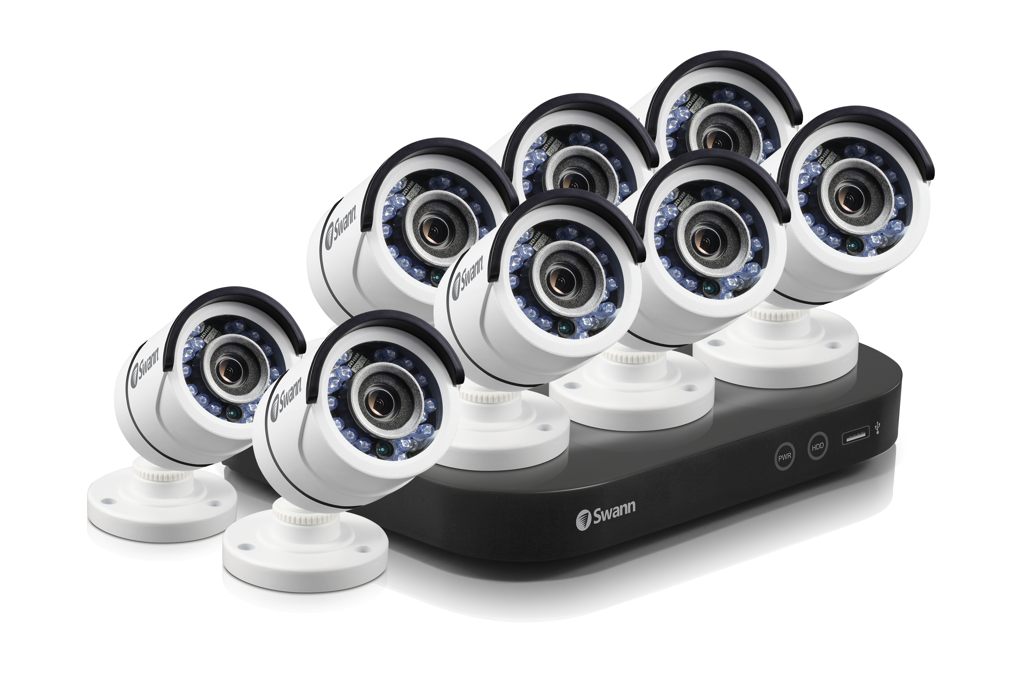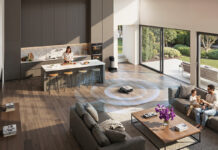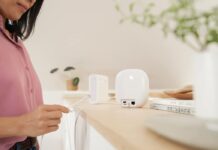
Planning for a smart home security system isn’t all that tough. You just need to make sure that you think about some of the small details and then think through how fixed or flexible you’d like the installation fittings to be.
Installation of a smart home security system can be a fairly DIY job and in most cases can be accomplished in an afternoon. However, if you start to think about where you want your cameras to be mounted, how many and what other things you want (ie. storage capabilities, etc.), then you can always rely on the help of Geek Squad to get you through it.
Here are a few things you should think through while you’re in the process of adding a smart home security system to your space.
Where do you want your security system to be?
It’s a very simple question, but do you want an indoor system, an outdoor system, or both? Once you’ve determined whether you want to go for security on just the inside, just the outside, or both, you can start looking at systems.
If you just want an indoor camera system, there are a small handful of options out there for you. These IP Cameras are often single camera setups that are no larger than a smartphone (often smaller) and can be suspended or placed discreetly within your home. They plug in and then require you to download an app and sync the camera up to your network. There are a lot of different IP camera options out there, including the Nest Cam, a few options from Netgear, and D-Link, as well as the Best Buy exclusive EZVIZ camera. Do some research before you commit to one, especially in trying to understand where it will sit in your room and what sort of a view you’d like. Some cameras also broadcast back in 720p, and some can do full 1080p, but the main factor for something like this might just come down to the broadcasting angle. If you’re going to be sitting the camera in the centre of the room, you may want to get a camera with the widest angle view possible, so that you can capture as much in the periphery as possible. With an example like that, Netgear’s Arlo Q or the Nest Indoor Cam are the way to go, with both featuring 1080p resolution capture and a 130 degree wide angle view.
It’s also worth thinking about how many cameras you want. If you’re running a dual indoor/outdoor system, you can get a full system in one swoop and don’t have to build each one at a time. There are systems that range from 2 all the way to 8 cameras. 4 cameras seem to be common for an outdoor setup, so that you can capture something in every corner of the house. However, if you have a lot of other attachments to the home (like a garage) or your home has a back alleyway (or other areas of concern), you may want to consider a 6 or 8 camera system.

Picking the right system for outside of your home
It’s true that security camera systems come in all shapes and sizes, but a major factor that should come into play with your decision to choose a security system is where you live in Canada. Whether you live on the wet and rainy west coast, or the freezing cold stretches of the Prairies, you need to pick a good security system that is capable of handling the weather. One of the things you absolutely need to do in conducting your security system research is understand the climates in which the camera can both perform and fail.
Just about every outdoor camera system has been Ingress Protection (IPx) rated for all sorts of crazy weather, so short of a hurricane, most systems are built to perform in rain or snow. However, it’s the extreme climates in which the cameras tend to fail or shut down. There aren’t many areas in Canada that reach a constant 40-45 degree celsius climate throughout the year, but just about all cameras can’t perform consistently at temperatures higher than that. On the other side of things, most outdoor cameras begin to fail once the temperature is consistently in the -10 range in the winter. You actually have to go with a more premium brand like Netgear’s Arlo to get performance down to about -20. Swann’s cameras actually have one of the more drastic weather swinging camera systems, capable of operating in as low as -20 and as high as 50 degrees celsius.

How do you want your system to record data?
When choosing a camera setup or system, you should think about how and where you want your data to be recorded. Larger security systems with multiple cameras still come with HQ bases that will allow you to record a certain amount of footage and save it locally. However, if you are running single camera systems (whether it be IP Cameras, doorbell cameras, or both), many don’t tend to come with any sort of additional built-in recording mechanisms. In this case, storage will be done over the cloud and broadcast to your smart devices. Sometimes, this is probably all you’re going to need, especially if you’re only running a simple system like a living room or front door-style setup. Just about all these services include some sort of cloud storage capabilities. Many providers are moving toward limited free recording services (ie. last 3-7 days) while all of them have additional subscription services for paid storage.

Do you want your security system to interact with other smart devices?
The beauty of smart home security systems now is that many can interact with other devices. Many will transmit real-time action to your phone or tablet and let you see what’s happening in your home for you to act by either calling the police while it’s recording, or (if it’s a family member that’s popped home) for you to have a conversation with them.
One of the latest things that you can do with many smart security systems is use them with your voice assistants. With Nest being owned by Google, you’ll obviously be able to access any Nest Camera products with Google Home. Nest’s Cameras also work with Alexa too! You can voice command both to show you live views of wherever you have your cameras set up.
For a multiple camera view, Netgear’s Arlo cameras now work with both Alexa and Google Home as well. Just input the applicable skill, and then you can voice command your way to live views of whatever your cameras are picking up.
What is my internet connectivity like around the house?
One of the biggest reliances of your security system will be the strength of your internet connection. If you’re going to be setting cameras up around the perimeter of your home, or even in any detached buildings (i.e., sheds, garages, poolhouses, etc.), whatever signal they’re transmitting back will be heavily based on your internet connection’s signal strength. If untested, you’ll still be able to tell very quickly whether or not the signal in certain areas of your home is strong if you end up installing a camera and see a lot of lag.
To that note, you may want to consider investing in a faster connection, and then look at adding a range extender over top to take care of some of those weak areas. Keep in mind that signal strength is heavily dependent on the construction of your home, and what the signal might be passing through. If you have a lot of electronic devices relying on your existing connection, or hindering the signal to/from a camera, that might hurt things too.
These are a few really quick things to think about while looking for a new smart home security system. As always, be sure that the option you choose actually works on the devices you have, and ensure that your devices are up to date to the minimum operating system requirements.
Now that you’ve had the chance to think through these factors, go ahead and pick out the new security system of your dreams! Check out the full range of home security systems now available at your local Best Buy and online at BestBuy.ca



